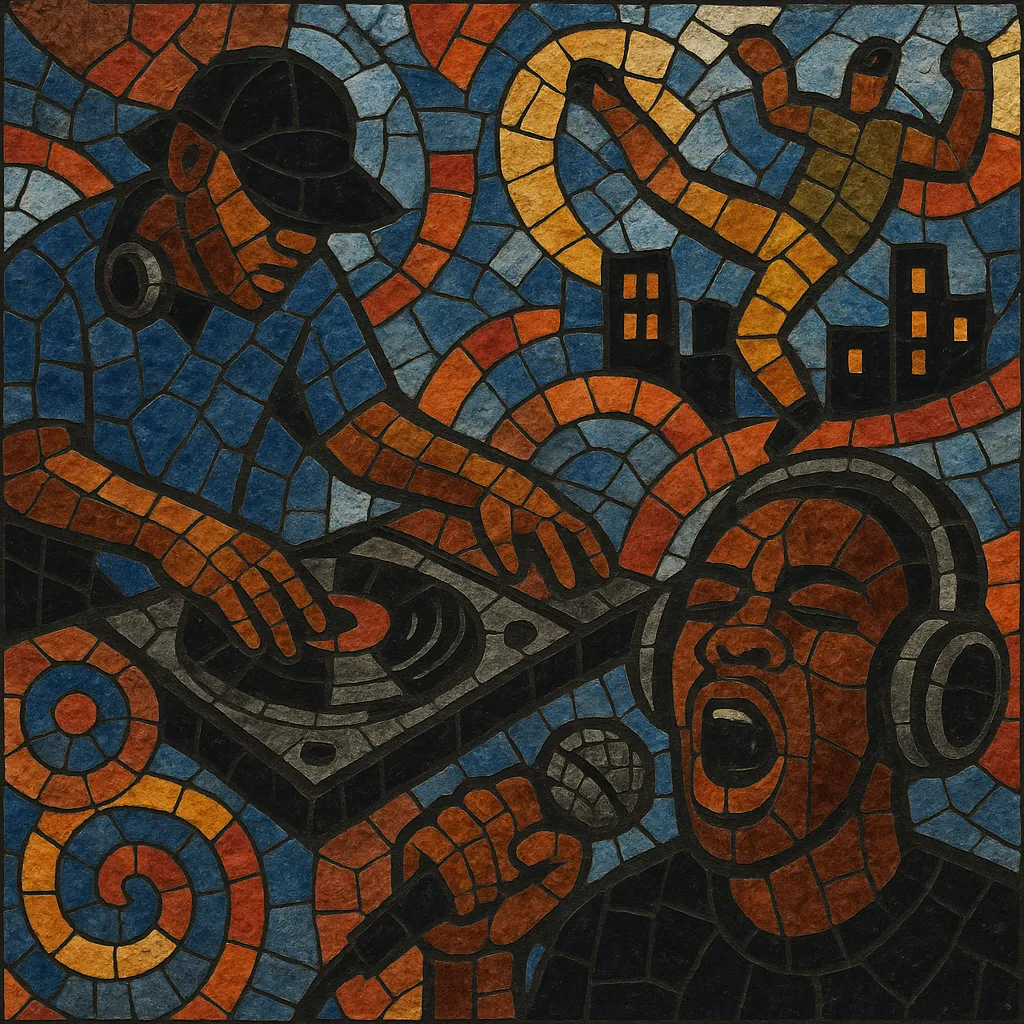Ghettotech is a high‑velocity dance music from Detroit that fuses the machine‑funk of Detroit techno and electro with the bass‑heavy shock tactics of Miami bass, the raw chant‑driven energy of Chicago ghetto house, and hip‑hop’s MC culture.
Typically running around 150–160 BPM, tracks emphasize pounding 4/4 kicks, syncopated claps and toms, stuttered vocal chops, and minimal, raunchy call‑and‑response hooks. Production is stripped‑down and percussive, relying on 808/909 drum programming, gritty bass lines, and rapid‑fire edits designed for explosive DJ mixing and fast footwork (notably the Detroit Jit).
Ghettotech emerged in Detroit in the mid‑to‑late 1990s, incubated in a city already synonymous with techno and electro. Local DJs drew on the mechanical drive of Detroit techno and electro, the sub‑shaking low end and X‑rated swagger of Miami bass, and the chant‑heavy simplicity of Chicago ghetto house. The result was a faster, rougher party sound built for club battles and fast footwork (the Detroit Jit).
Pioneers such as DJ Assault, DJ Godfather, Disco D, DJ Nasty, Mr. De, and Starski & Clutch shaped the genre’s template: 150–160 BPM, 808/909 percussion, chopped vocal hooks, and quick‑cut DJ techniques. Labels like Twilight 76 and Databass Records pressed influential 12″s and mix CDs (e.g., the Accelerated Funk series), spreading the sound across Midwest raves and beyond. The MC presence—shouted tags, bawdy chants, and party‑starting call‑outs—kept a direct line to hip‑hop culture while the drums stayed resolutely techno‑mechanical.
While often mentioned alongside Chicago ghetto house, ghettotech is generally faster, more electro/techno‑inflected, and more focused on hyper‑percussive edits. Detroit’s dance culture (the Jit) and the city’s legacy of electro‑bass gave ghettotech a distinct, metallic edge. Through DJ exchange and regional scenes, it cross‑pollinated with Chicago’s juke/footwork communities, trading tempos, edits, and battle‑ready structures.
By the 2000s, ghettotech’s mix‑CD culture and white‑label 12″s had made it a cult export. Its impact is audible in the evolution of juke/footwork and in the broader acceptance of high‑BPM, vocal‑chop‑driven club music. Periodic revivals and new Detroit releases continue the lineage, preserving its raw, party‑first ethos.


